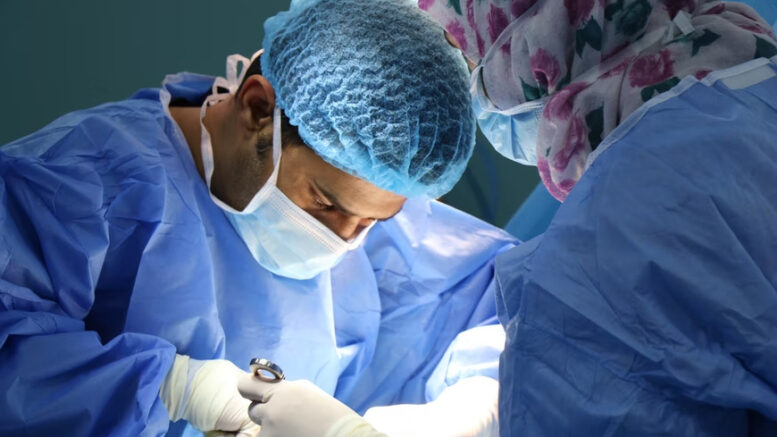The use of gynecological laparoscopic operations for the diagnosis and treatment of a wide range of disorders affecting the female reproductive system has increased. Adhesions can form during these minimally invasive operations, even though they have several advantages, including smaller incisions, quicker recovery periods, and less discomfort after surgery. Adhesions are bands of scar tissue that form either between the abdominal wall and the pelvic organs or between the pelvic organs themselves. This article will enlighten you on the various issues that these adhesions can create, including infertility, chronic pain, and intestinal obstruction.
Understanding Adhesions
Prior to diving into preventative tactics, it’s critical to comprehend adhesions and their formation. During surgery, tissue stress and inflammation result in adhesions, which cause surrounding organs and tissue to adhere to one another. Adhesions may develop during gynecological laparoscopic operations because of pelvic organ manipulation, the use of energy devices, or contact with foreign objects such as surgical gauze or gloves. Adhesion development can also be caused by variables such as severe bleeding, lengthy surgery, and infection.
Preoperative Preparation
Adhesions can be effectively prevented even before surgery occurs. To minimize tissue stress and inflammation and lower the chance of adhesion development, preoperative pretreatment is essential. Patients should have a complete evaluation to rule out any underlying medical disorders, such as endometriosis or prior pelvic procedures, that might increase their risk of developing adhesions. Reducing the chance of adhesions and improving surgical results can be achieved by optimizing patients’ general health and taking care of any underlying medical conditions.
Surgical Technique
The probability of adhesion development during gynecological laparoscopic operations is greatly influenced by the surgical method used. To avoid tissue stress and the ensuing production of adhesions, surgeons should treat tissues with gentleness. Careful pelvic organ manipulation, accurate tissue dissection, and rigorous hemostasis are a few techniques that can help reduce tissue injury and the chance of adhesions. To further inhibit the formation of adhesions, anti-adhesive chemicals or barrier material may also be used.
Proper Tissue Handling
To avoid adhesions, proper tissue management is essential during the whole surgical process. To prevent needless tissue damage, surgeons and operating room personnel should employ delicate approaches and the proper instruments. Retaining adequate tissue hydration, limiting tissue drying, and avoiding excessive energy device usage can all assist in protecting tissue integrity and lowering the chance of adhesion development. Hemostasis must also be carefully monitored in order to avoid postoperative bleeding, which might promote the development of adhesions.
Postoperative Care
Following gynecological laparoscopic surgery, postoperative care is essential for minimizing adhesion formation and encouraging the best possible recovery. Postoperative instructions that cover wound care, activity limitations, and symptom management should be given in detail to patients. Through the promotion of tissue mobility and the prevention of adhesion development, early ambulation and physical exercise can help avoid adhesions. Patients should also be closely watched for any indications of postoperative problems, such as heavy bleeding or infection since these might raise the chance of adhesions.
Follow-Up and Monitoring
For patients undergoing gynecological laparoscopic procedures, adhesion prevention requires frequent follow-up and monitoring. Healthcare professionals should evaluate patients on a regular basis to gauge their level of recovery and keep an eye out for any indications of adhesion-related problems. Ultrasonography and magnetic resonance imaging (MRI) can be used to assess pelvic anatomy and find any attachments that may have developed. Early adhesion diagnosis enables prompt management and action to stop more problems and protect patients’ reproductive health.
Use of Anti-Adhesion Agents
For gynecological laparoscopic patients, anti-adhesion medicines can be helpful in avoiding adhesions in addition to careful surgical technique and appropriate tissue management. Known by another name, adhesion barriers, these substances are injected intraoperatively to provide anatomical protection between damaged tissues, keeping them from sticking to one another while they recover. Anti-adhesion agents might be films, gels, or sprays, and their purpose is to gradually break down and absorb without leaving any trace. Surgeons may also consider the use of an icodextrin solution, a type of anti-adhesion agent that has been shown to reduce the formation of adhesions in gynecological surgeries effectively.
Conclusion
Preoperative, during, and postoperative techniques must all be included in a complete plan to prevent adhesions in gynecologic laparoscopic patients. For patients having gynecological laparoscopic operations, healthcare practitioners can reduce the risk of adhesions and enhance surgical results by comprehending the elements that lead to adhesion development and putting preventative measures in place. Healthcare professionals may assist patients in achieving excellent surgical results and maintaining optimal pelvic health by ensuring appropriate preoperative planning, careful surgical technique, and attentive postoperative care.
Article edited and fact checked by our editorial team.
References:
- Welle NJ, Sajjad H, Adkins A, Burns B. Bowel Adhesions. 2023 Mar 11. In: StatPearls [Internet]. Treasure Island (FL): StatPearls Publishing; 2024 Jan–. PMID: 29262174.
- Holmdahl L, Risberg B. Adhesions: prevention and complications in general surgery. Eur J Surg. 1997 Mar;163(3):169-74. PMID: 9085057.
- Molinas CR, Binda MM, Manavella GD, Koninckx PR. Adhesion formation after laparoscopic surgery: what do we know about the role of the peritoneal environment? Facts Views Vis Obgyn. 2010;2(3):149-60. PMID: 25013705; PMCID: PMC4090584.
